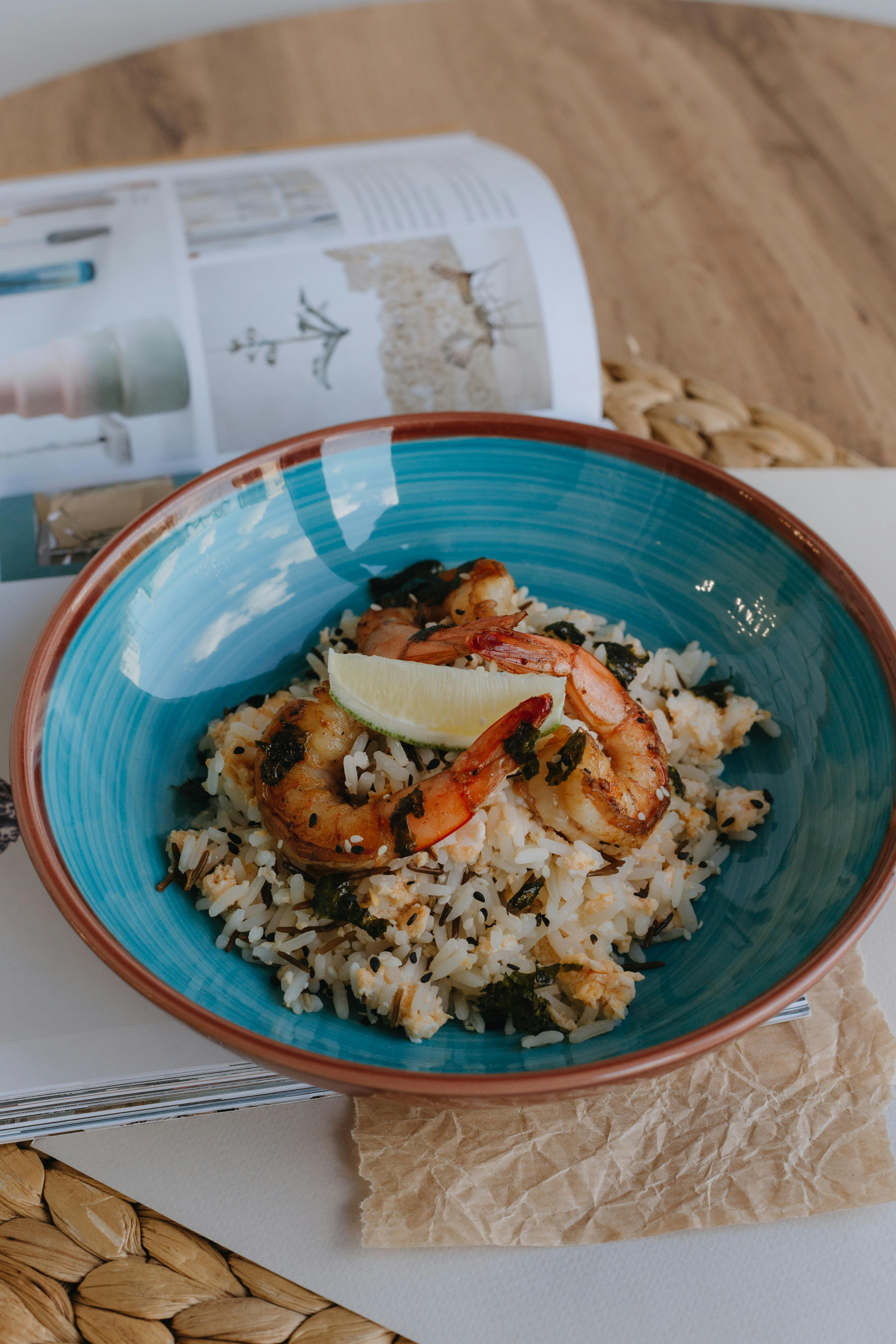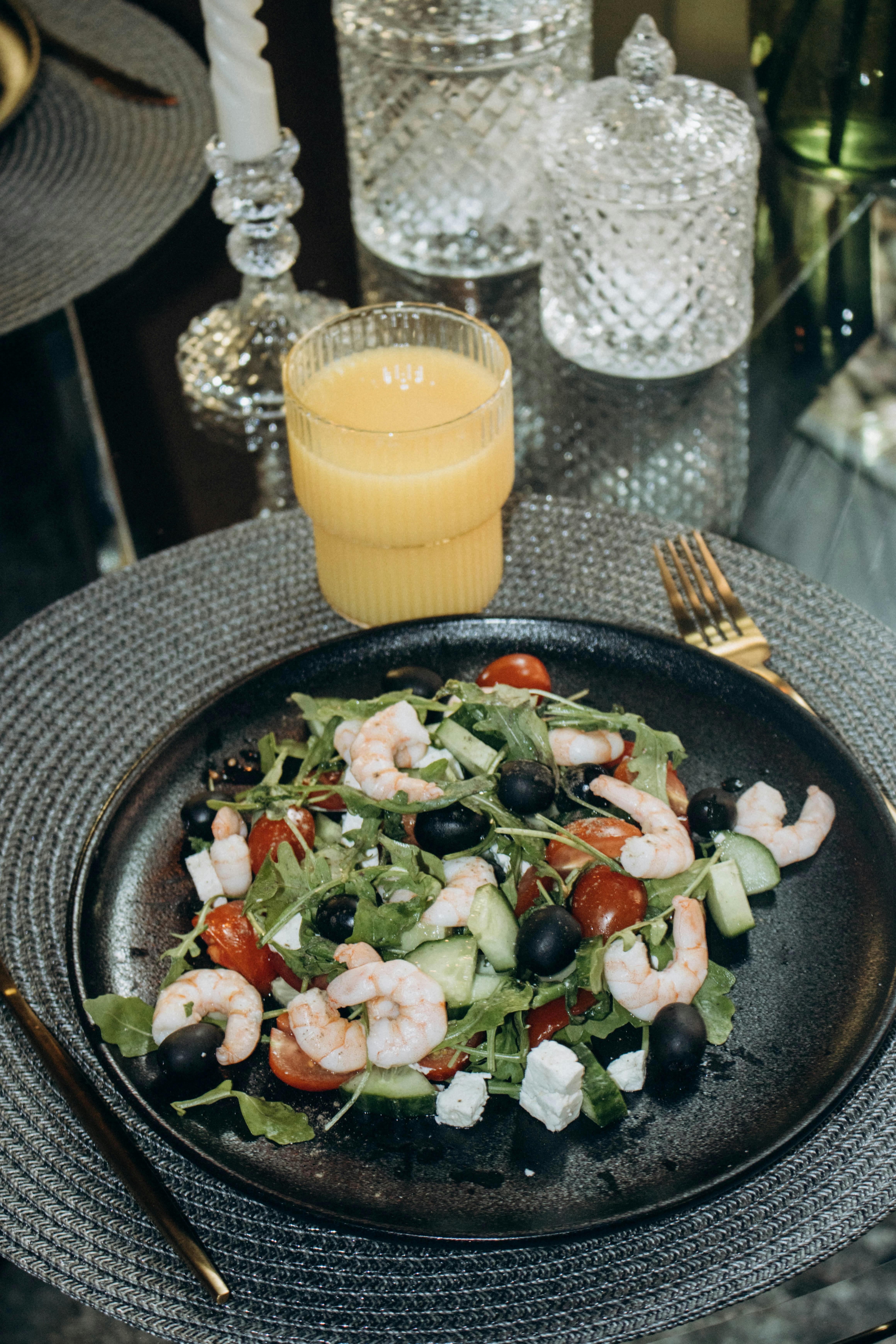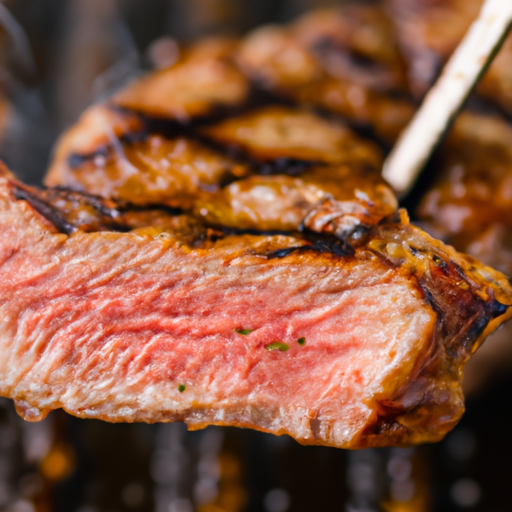Join us on a mouthwatering journey as we explore the rich history of Brazilian Churrasco, a tradition that brings together the art of grilling meats and the vibrant spirit of the gauchos. At Tastepan.com, we believe that food is not only about taste, but also about the stories behind it. So put on your apron and prepare to savor the flavors of Brazil while delving into the cultural significance of this beloved culinary tradition. With each juicy bite and every sizzle of the grill, you’ll discover the fusion of flavors and the sense of community that makes Churrasco an integral part of Brazilian culture.

The Origins of Churrasco
1.1 Indigenous Influence
Churrasco, the mouthwatering Brazilian barbecue tradition, has its roots deeply embedded in the indigenous cultures of Brazil. The indigenous peoples of Brazil practiced a form of open-fire grilling where large cuts of meat were skewered and cooked over the flames. This method, known as “espeto corrido,” involved slowly rotating the meat to ensure even cooking and prevent charring. The indigenous people used a variety of techniques and marinades to enhance the flavors of the meat, incorporating local herbs and spices.
1.2 Arrival of Portuguese Explorers
The history of churrasco took a significant turn with the arrival of Portuguese explorers in Brazil. They brought along their grilling techniques and introduced important elements that would shape the future of churrasco. The Portuguese brought livestock, including cattle, which thrived in the vast plains of Brazil. This marked the starting point of the Gaucho culture and the abundance of high-quality meat that would become synonymous with churrasco.
The Rise of the Gaucho Culture
2.1 The Nomadic Lifestyle
The Gaucho culture emerged in the 18th and 19th centuries in the southern regions of Brazil, Uruguay, and Argentina. Gauchos were skilled horsemen and cattle herders who lived a nomadic lifestyle, roaming the grassy plains in search of grazing pastures for their livestock. Their self-sufficient and independent way of life greatly influenced the development of churrasco. Gauchos quickly discovered that grilling meat over an open flame was an efficient way to prepare their meals while on the move.
2.2 The Birth of Churrasco
As the Gaucho culture flourished, so did churrasco. The Gauchos perfected the art of grilling meat, embracing a simple yet effective cooking method that preserved the natural flavors and tenderness of the meat. Skewered on long swords or spears, the meat was cooked over open fires, a technique that came to be known as “churrasco.” The Gauchos’ expertise in selecting the right cuts of meat and their knowledge of seasoning and marinating techniques paved the way for the churrasco we know and love today.

Traditional Cuts of Meat
3.1 Picanha
Picanha is arguably the most prized and popular cut of meat in Brazilian churrasco. Taken from the top sirloin, it is known for its succulent taste and tender texture. The cap, or “fat cap,” on top of the picanha ensures that the meat remains juicy and flavorful during cooking. Served thinly sliced, the picanha melts in your mouth, leaving a mouthwatering experience that epitomizes the essence of churrasco.
3.2 Fraldinha
Fraldinha, also known as flank steak, is a flavorful and versatile cut of beef commonly used in churrasco. It is prized for its rich marbling and tenderness. The fraldinha is often seasoned with a simple salt and pepper rub before being cooked to perfection over open flames. The result is a beautifully caramelized crust and a juicy, melt-in-your-mouth interior that showcases the true artistry of churrasco.
3.3 Costela
Costela, or beef ribs, is a staple in Brazilian churrasco. This cut of meat is well-marbled, ensuring a succulent and flavorful dining experience. The costela is typically cooked slowly and patiently to allow the fat to render and infuse the meat with richness. The result is tantalizingly tender beef ribs that effortlessly fall off the bone, providing a truly satisfying feast for the senses.
3.4 Maminha
Maminha, also known as tri-tip, is a triangular muscle found on the bottom sirloin. This cut is known for its tenderness and robust beef flavor. The maminha is often marinated with a mixture of herbs, garlic, and olive oil, enhancing its natural flavors. Cooked to a perfect medium-rare, the maminha maintains its juiciness and tenderness, making it a favorite among churrasco enthusiasts.
Cooking Techniques and Equipment
4.1 Open-Flame Grilling
Open-flame grilling is at the heart of churrasco. Whether it’s a roaring wood fire or charcoal embers, the heat and smoke impart a unique flavor to the meat. The simplicity of this cooking method allows for a closer connection with the ingredients, enhancing the natural flavors without overpowering them. The meat is typically skewered on long metal swords or spears, allowing for even cooking and ease of handling.
4.2 Rotisserie Style
Rotisserie-style churrasco involves slowly spinning the skewered meat over the flames. This technique ensures uniform heat distribution and allows the fat to render slowly, resulting in tender and juicy meat. The rotation also helps to crisp up the exterior, creating a delectable caramelized crust that locks in the flavors.
4.3 Churrasqueira: The Traditional Grill
The churrasqueira, a traditional Brazilian grill, is a fundamental tool used in churrasco. Traditionally made of bricks or stones, the churrasqueira features an open fire pit where the meat is cooked. It often includes an adjustable grill rack that can be raised or lowered to control the heat intensity. The churrasqueira not only serves as a cooking platform but also as a centerpiece for social gatherings, where friends and family can gather around and enjoy the churrasco experience.

The Role of Gauchos in Churrasco
5.1 Gaucho Culture and Identity
Gauchos hold a special place in the heart of churrasco. They embody the spirit of the open plains and the nomadic lifestyle that gave birth to this beloved tradition. Gauchos are known for their horsemanship, cattle herding skills, and deep connection to the land. Their rugged and independent nature is reflected in the simplicity and authenticity of churrasco, making it a cultural symbol of Brazil.
5.2 The Gauchos’ Contribution to Churrasco
As the early pioneers of churrasco, Gauchos played a vital role in shaping the techniques, flavors, and traditions associated with this culinary tradition. Their intimate knowledge of cattle, understanding of meat cuts, and mastery of cooking techniques transformed churrasco into an art form. The Gauchos’ commitment to quality, authentic flavors, and dedication to preserving their cultural heritage have paved the way for the widespread appreciation of churrasco in Brazil and around the world.
Festivals and Celebrations
6.1 Festa do Churrasco
Festa do Churrasco, or Barbecue Festival, is an annual celebration of churrasco that brings together enthusiasts from across Brazil. This vibrant event showcases the diverse regional variations of churrasco, offering a feast for the senses. Attendees can savor an array of mouthwatering meats, indulge in traditional accompaniments, and immerse themselves in the lively atmosphere of Brazilian culture. Festa do Churrasco is a testament to the enduring popularity and widespread love for churrasco throughout Brazil.
6.2 Churrascadas: Big Barbecue Parties
Churrascadas are large-scale outdoor parties that revolve around the art of churrasco. These gatherings are an opportunity for friends, families, and communities to come together and celebrate. The centerpiece of a churrascada is an impressive array of grilled meats, cooked to perfection over open fires. Guests enjoy an abundance of food, vibrant music, and the convivial atmosphere that is characteristic of Brazilian hospitality. Churrascadas serve as a reminder of the social and cultural significance of churrasco in Brazilian society.
Regional Variations
7.1 Churrasco in Rio Grande do Sul
Rio Grande do Sul, the southernmost state of Brazil, is renowned for its unique churrasco traditions. Here, the gauchos take pride in their slow, methodical cooking techniques that result in some of the most succulent and flavorful churrasco in the country. The use of wood fire and the focus on traditional cuts of meat, such as picanha and costela, are the cornerstones of Rio Grande do Sul’s churrasco tradition. Additionally, the region embraces the gauchos’ love for open-fire cooking and rotisserie-style grilling to create a distinct churrasco experience.
7.2 Churrasco in São Paulo
São Paulo, as a bustling metropolis and cultural melting pot, has its own vibrant churrasco scene. While the traditional aspects of churrasco remain, São Paulo has embraced a more diverse range of influences, reflecting the city’s cosmopolitan nature. Modern churrasco establishments in São Paulo often offer a variety of meat cuts, including imported specialties, and incorporate international flavors and cooking techniques. São Paulo’s churrasco presents an exciting fusion of tradition and innovation, showcasing the dynamic nature of Brazilian cuisine.
Churrascarias: Brazilian Steakhouse Experience
8.1 Rodizio Style Service
Churrascarias, Brazilian steakhouses, provide an immersive and unforgettable dining experience. One of the hallmarks of a churrascaria is the rodizio style of service. Patrons are treated to an all-you-can-eat extravaganza, where an endless parade of waiters, known as “passadores,” circulate the restaurant with skewers of various grilled meats. The passadores skillfully slice a portion of meat onto your plate, offering an array of cuts cooked to perfection. This unique dining style allows guests to sample a wide variety of flavors and cuts, ensuring a memorable feast.
8.2 All-You-Can-Eat Meat Selections
Another distinctive aspect of churrascarias is the extensive meat selection. From the popular picanha to lesser-known cuts like coração de frango (chicken heart) or linguiça (Brazilian sausage), churrascarias offer a diverse menu that caters to all tastes. The expertly grilled meats, accompanied by an assortment of traditional sides and condiments, create a culinary experience that leaves a lasting impression. Churrascarias have become iconic establishments, both in Brazil and abroad, where people can gather and indulge in the flavors of churrasco.
Popular Churrasco Accompaniments
9.1 Farofa
Farofa is a traditional Brazilian side dish often served with churrasco. It is made from cassava or corn flour, which is toasted in butter or oil and mixed with various ingredients, such as bacon, onions, and spices. Farofa adds a delightful crunch and savory flavor to the meal, complementing the rich and juicy meats of churrasco.
9.2 Vinagrete
Vinagrete is a zesty and refreshing tomato and vinegar-based sauce that provides a burst of flavor to churrasco. Often made with onions, bell peppers, tomatoes, cilantro, and a touch of vinegar, it pairs perfectly with grilled meats, adding a tangy and acidic element to balance the richness of the churrasco.
9.3 Feijão Tropeiro
Feijão Tropeiro, a traditional Brazilian dish, is a hearty combination of beans, bacon, sausage, and various seasonings. Served as a side dish with churrasco, it adds a comforting and satisfying element to the meal. The flavors of feijão tropeiro perfectly complement the smoky and robust flavors of churrasco, creating a harmonious combination.
9.4 Pão de Queijo
Pão de Queijo, or cheese bread, is a beloved Brazilian treat that often accompanies churrasco. These small, gluten-free bread rolls are made with tapioca flour and cheese, resulting in a soft and chewy texture with a delightful cheese flavor. Pão de Queijo is a delightful addition to the churrasco experience, offering a unique and delectable contrast to the grilled meats.
The Global Spread of Churrasco
10.1 Churrasco in the United States
Churrasco has found a passionate following in the United States, where it has evolved into a popular culinary trend. Traditional churrascarias have opened their doors, offering the full rodizio dining experience to eager diners. Additionally, churrasco-inspired dishes and flavors have made their way into modern American cuisine, combining traditional Brazilian techniques with local influences. Churrasco has become a testament to the universal appeal of grilled meats and the rich cultural exchange that occurs in the world of food.
10.2 Churrasco in Europe
Churrasco has captivated the taste buds of European food enthusiasts, who have embraced this fiery Brazilian tradition. Churrasco-style restaurants have sprung up across Europe, introducing locals and visitors alike to the allure of open-fire grilling and the tantalizing flavors of Brazilian beef. The fusion of Brazilian churrasco with local ingredients and culinary traditions has given rise to exciting new interpretations, showcasing the versatility and adaptability of this beloved barbecue tradition.
10.3 Churrasco in Asia
The flavors of churrasco have made their way to the vibrant culinary landscape of Asia. Churrasco-inspired restaurants and establishments have emerged, offering Asian food lovers a chance to experience the smoky and mouthwatering delights of Brazilian meats. The Asian love for communal dining and grilled delicacies has found common ground with the traditions of churrasco, leading to a harmonious fusion of flavors and a newfound appreciation for this South American culinary gem.
In conclusion, churrasco stands as a testament to the rich history, cultural significance, and incredible flavors that define Brazilian cuisine. Rooted in indigenous traditions and perfected by the Gauchos, churrasco has evolved into an art form that celebrates the natural flavors of high-quality meat. Whether enjoyed in traditional churrascarias or adapted in diverse global contexts, churrasco continues to capture the hearts and palates of food enthusiasts around the world. So, gather your friends and family, fire up the grill, and savor the mouthwatering experience of churrasco.

